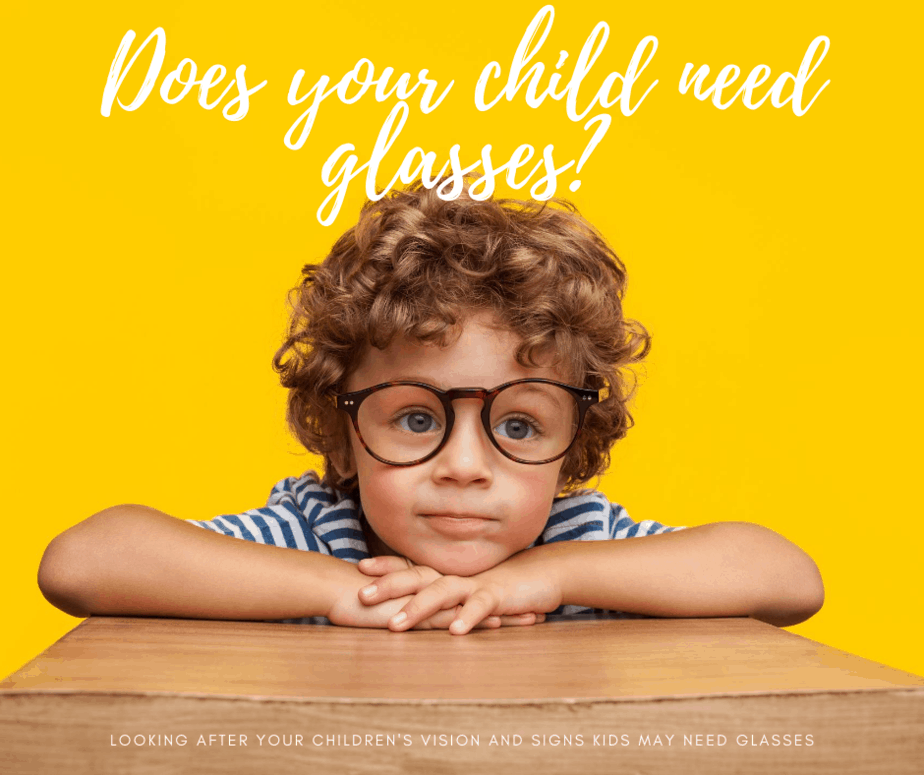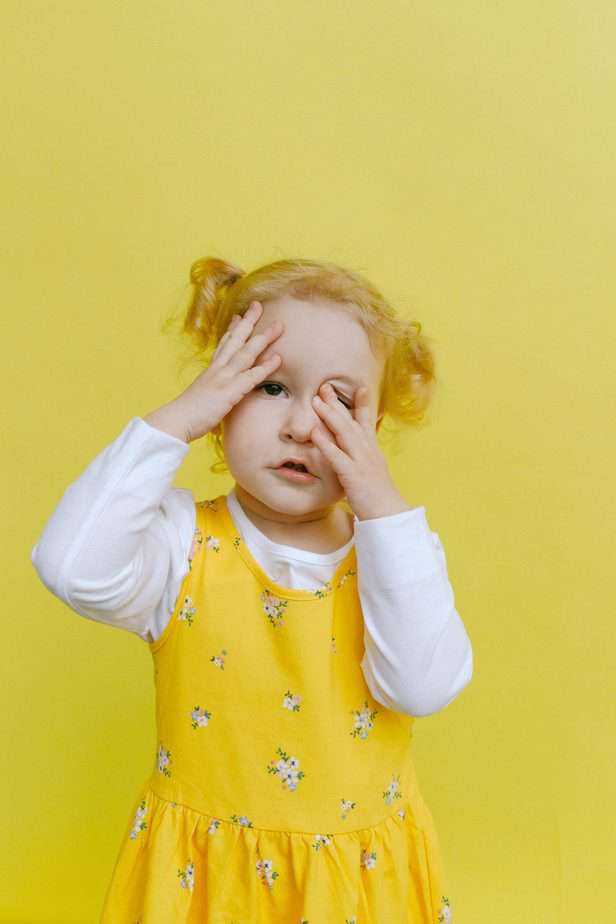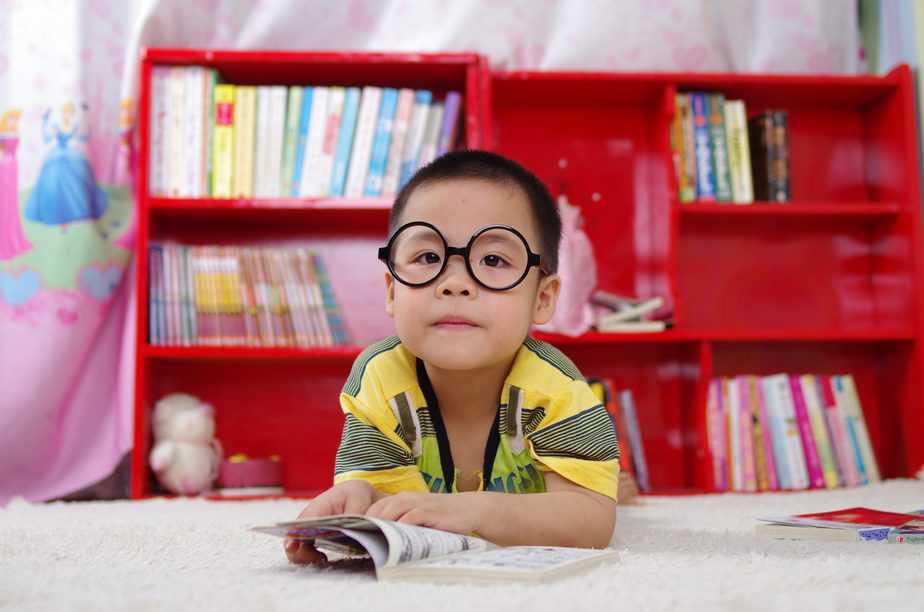“One in four school-age children have a vision problem that, if left undetected and untreated, could affect their learning and personal development” – Prevent Blindness America.

As adults, we have learned to detect when something is wrong with our vision and then have the capability to seek the help we need, but for children, it can be difficult for them to know if their vision is impaired as they have never learned what it means to have good vision. As parents, it’s our job to spot the signs that our children may be having trouble with their eyesight and get them the help they need so that they do not miss out on their early development. In this post, our visiting author takes a look at some of the early warning signs that your child may have a vision problem, and discuss some of the things that you could do to help.
Signs of Vision Problems in Children/Signs Kids May Need Glasses
The best way to detect a vision problem in your child is to take them to an optometrist for a full assessment. However, in reality, these checkups are often few and far between, especially if there appears to be no reason to suspect a problem. To pick up on any vision difficulties early and before they become more of a problem, it’s crucial to keep an eye out for behavioral indicators.
Your child is struggling at school
Children often find it hard to vocalize their own vision difficulties, and as such, can spend years in school struggling to see the blackboard or to focus on their own work. If your child seems to be struggling with their school work, or their teachers have told you that they keep getting frustrated with their work, this could be a sign that they are struggling with their vision.
They sit very close to the television
Nearsighted children generally have very good vision at close-range. They, therefore, may display strange behavior such as sitting extremely close to the television, lifting their books to the end of their nose, or walking right up to signs to read them.
They squint a lot
If you notice that your child is wrinkling their face and squinting their eyes when trying to see long-distance, this could be because they compensate for reduced vision. Squinting temporarily improves a person’s vision but can also cause headaches and eye-strain.
They get a lot of headaches
Farsighted children tend to compensate for their vision problem by squinting and furrowing their brow. This can lead to a frontal headache. If your child gets headaches regularly, then it is always worth having their eyes tested.
They close one eye when reading
Children are very good at adapting to their vision problems and will often close or cover their bad eye if they notice that it improves the vision. Covering or closing an eye while reading can also be a sign of double vision and other medical problems, so you should have their vision checked straight away.
They lose their place when reading
Although it is normal for children to stumble a little when reading, if they are consistently losing their place, or often use a finger to point to the line they are reading, this could indicate that they have a vision problem like astigmatism.
They rub their eyes a lot
It’s normal for children to rub their eyes when they are tired, but if they do it at abnormal times, this could be because they suffer from eye fatigue caused by any number of vision problems.

Photo by Anna Shvets
What to do if you suspect that your child is having trouble seeing
If you have any inclination that your child may be experiencing difficulties with their sight, then you should book an appointment with an optometrist right away. An optometrist will be able to perform all of the necessary checks to determine whether your child has a sight problem and will be able to advise you on the best course of action if they do. Generally, most sight issues in children can be easily rectified with a pair of glasses, which you can purchase from your optometrist or online – see here.
Buying children’s glasses
Kids glasses come in many colors, sizes, and styles to ensure that they fit with your child’s unique personality. At your eye appointment, if your child needs glasses, the optometrist will measure them and provide you with a prescription. This prescription can then be used to buy glasses for your child online or at any other glasses store. Remember, children’s eyes and faces change rapidly during their early years. So, you must have their eyes re-tested at least annually, their glasses resized, and their prescription updated accordingly. Many kid’s glasses account for their rapid growth by having adjustable nose pads and temple lengths that can be made bigger throughout the year until your child has their eyes re-assessed.

Credit: Pixabay
Encouraging children to wear their glasses
Even though glasses may significantly improve your child’s vision, it is not uncommon for them not to wear them. Children are often very wary of new experiences and may see their glasses as something that makes them stand out or look different from their friends. Here are some ways to get your child excited about wearing their glasses.
-
Let them choose their frames
Although they may not be to your taste, it’s essential to let your child lead when making any decisions about their frames. Your child is much more likely to wear a pair of glasses that they have picked out themselves.
-
Point out characters and celebrities that wear glasses
Your child may be worried that their glasses make them look uncool or different from their friends. To help them build their confidence, try pointing out celebrities or fictional characters who wear glasses so that they can see how common they are and that cool people wear them too.
-
Have a conversation about their worries
Sometimes, all children need to help them learn to love their glasses is a simple conversation with you. Try to start a conversation about why they don’t want to wear their glasses, listen to their fears, and explain how their eyeglasses will improve their life. Depending on their age, you may want to discuss the possibility of contact lenses or even laser eye surgery.
-
Increase their wear-time slowly
Ging from zero to one hundred can be a little too much for some children who are new to wearing glasses, so instead, slowly increase the amount of time that they need to wear their glasses for. Start by simply asking them to wear their glasses for 15 minutes every day and slowly increase this time as they become more comfortable.
-
Check-in with their teachers
School can be a very difficult and daunting place for children, so it is vital to check in with their teachers to see if they are continuing to wear their glasses in the school environment. Ask your teachers to encourage and prompt your child to put on their glasses during lesson times, and if you find that their glasses are repeatedly being left at home, then consider buying a second pair to leave at school.
So, there you have it – seven signs that your child may have a vision problem and could need glasses, what you should do if you spot one or more of the signs, and how you can encourage your child to wear their glasses. Does your child have a vision problem? How did you find out, and what signs did you see?